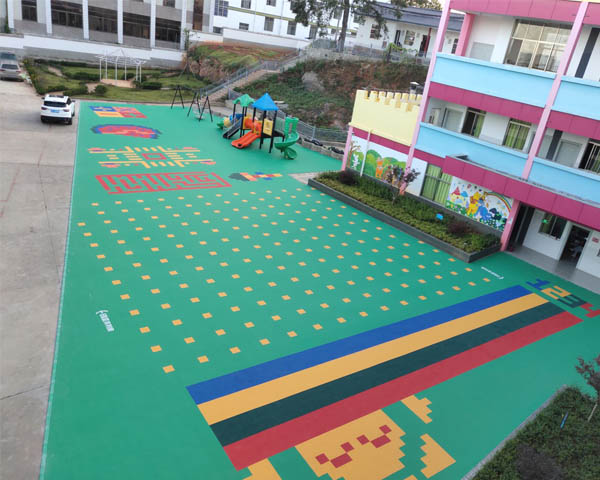10 月 . 14, 2024 17:32 Back to list
Different Types of Surfaces for Outdoor Basketball Courts Explained
Types of Outdoor Basketball Court Surfaces
When it comes to playing basketball outdoors, the surface on which the game takes place significantly impacts both performance and safety. There are several types of surfaces available for outdoor basketball courts, each with its unique advantages and drawbacks. This article will explore the most common types of outdoor basketball court surfaces, helping players, coaches, and facility managers choose the best option for their needs.
1. Asphalt
Asphalt is one of the most common surfaces for outdoor basketball courts. It is durable, cost-effective, and relatively easy to install. Asphalt surfaces can withstand various weather conditions, making them suitable for locations with diverse climates. Additionally, they offer good traction and are generally less slippery when wet compared to some other surfaces.
One downside to asphalt is that it can become very hot under direct sunlight, potentially affecting players' comfort and performance. It also tends to crack over time, particularly in areas with extreme temperature fluctuations. Regular maintenance, such as sealing and resurfacing, is essential to prolong the lifespan of an asphalt court.
2. Concrete
Concrete is another widely used material for outdoor basketball courts. It is incredibly durable and can last many years without significant wear and tear. Similar to asphalt, concrete is resistant to various weather conditions, making it suitable for almost any environment.
While concrete provides a stable playing surface, it can be quite unforgiving on players' joints. The hardness of the surface can lead to increased stress on knees and ankles, especially for athletes engaged in regular gameplay. To mitigate this impact, some courts may implement rubber overlays or padding in specific areas, though this can increase maintenance costs.
3. Rubber
Rubber surfaces are becoming increasingly popular for outdoor basketball courts due to their superior shock absorption properties. These surfaces can reduce injury risk by providing a softer landing during jumps and falls. Rubber can be laid as tiles or poured in place, allowing for a variety of design choices.
types of outdoor basketball court surfaces

While rubber offers excellent traction and comfort, it does require more maintenance compared to other surfaces. UV exposure can cause rubber surfaces to degrade over time, leading to discoloration and increased wear. Additionally, the installation cost for rubber surfaces tends to be higher than asphalt or concrete, making it a less budget-friendly option for some facilities.
4. Sport Court Tiles
Sport court tiles are interlocking tiles made from high-density polyethylene (HDPE) that create a resilient playing surface. These tiles are designed specifically for sports and can provide excellent traction and shock absorption. They are also often used in multi-sport facilities, as they can accommodate different games, including tennis and volleyball.
The primary advantage of sport court tiles is their ease of installation and maintenance. If a tile becomes damaged, it can be quickly replaced without having to redo the entire court. Additionally, the surface does not retain heat like asphalt or concrete, offering a more comfortable playing experience in hot weather.
However, some players may find that the texture of the tiles affects their playing experience, and the cost can be a limiting factor for smaller facilities.
5. Synthetic Surfaces
Synthetic surfaces are engineered materials designed to mimic the feel of either hardwood or outdoor surfaces while offering superior durability and maintenance benefits. These surfaces can be specially designed to resist UV rays, moisture, and wear and tear, making them perfect for outdoor settings.
One of the benefits of synthetic surfaces is their versatility. They can be tailored to meet specific needs, including enhancing grip or modifying cushioning for player comfort. Despite these advantages, synthetic surfaces can be costly to install and may require specialized maintenance practices.
Conclusion
Choosing the right surface for an outdoor basketball court involves considering various factors, including budget, climate, and the level of play expected. Each surface—whether asphalt, concrete, rubber, sport court tiles, or synthetic—has its unique benefits and potential drawbacks. By understanding the characteristics of each surface type, facility managers and players can make informed decisions that enhance performance and player safety. Ultimately, the right choice will foster a positive environment for athletes and encourage the love of the game!
-
Custom Pickleball Court Solutions Convert Tennis & Indoor Builds
NewsMay.30,2025
-
Outdoor Pickleball Court Costs Build & Install Pricing Guide
NewsMay.30,2025
-
Premium Pickleball Sports Courts Custom Design & Installation
NewsMay.30,2025
-
Indoor Pickleball Courts Tennis Court Conversion & Custom Builds Tempe
NewsMay.29,2025
-
Professional Pickleball Court Installation & Tennis Court Conversions
NewsMay.29,2025
-
Grey Synthetic surface-rubber prefabricated track
NewsMar.07,2025

